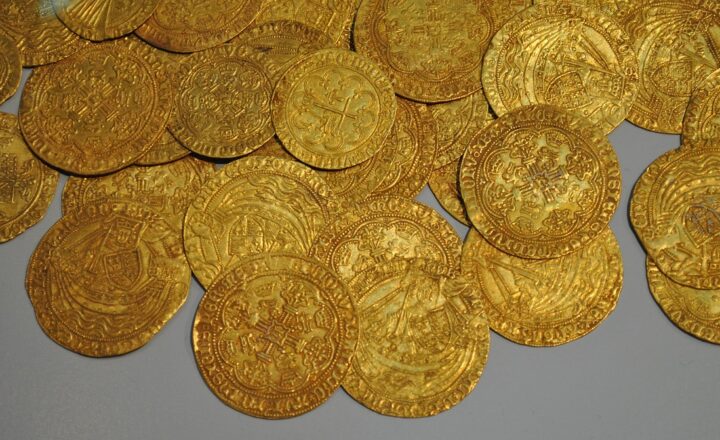Why Gold Is So Highly Prized in Different Cultures: A Global Look at Precious Metals
November 14, 2024

Gold has fascinated humanity for thousands of years, symbolizing wealth, power, and divinity across various cultures worldwide. Despite the changing economic landscape, gold’s allure remains steadfast, often surpassing the value bestowed by mere currency. In this article, we will explore the significance of gold across different cultures, its historical importance, and the psychological and economic factors that contribute to its cherished status.
1. The Historical Significance of Gold
Gold’s historical significance can be traced back over 5,000 years. Ancient civilizations like the Egyptians, Greeks, and Romans used gold not just as a means of trade but as a symbol of their power and divinity.
– Egyptians: In ancient Egypt, gold was associated with the gods. The burial treasures of the pharaohs, including masks and ornaments, highlighted gold’s imperishable nature. Gold represented eternal life, making it a crucial component in funerary rituals.
– Greeks and Romans: The Greeks used gold to denote status among aristocrats, while Roman emperors used it to mint coins that showcased their power. Gold helped facilitate trade and was often hoarded as a hedge against economic uncertainty.
Thus, gold’s historical role established its perception as a commodity of unmatched value.
2. Gold in Ancient Cultures
Different cultures have unique perspectives on gold. Here are a few notable examples:
– Indian Culture: In India, gold symbolizes prosperity and is used extensively in weddings and religious ceremonies. The longstanding tradition of gifting gold jewelry during festivals signifies wealth and blessings. India is one of the largest consumers of gold, viewing it as a form of savings and investment.
– Chinese Culture: In China, gold (specifically in the form of jewelry) is regarded as auspicious and is often worn during celebrations. The Chinese New Year sees a surge in gold purchases, as it is believed to bring good fortune and wealth.
– Mesoamerican Civilizations: The Aztecs and Incas considered gold sacred, often associating it with the sun. Their architectural wonders were adorned with gold, reflecting their belief in its divine attributes.
These examples demonstrate how gold has been interwoven into cultural identities, making it more than just a precious metal, but a substance imbued with meaning.
3. The Economic Perspective
Gold’s economic importance cannot be overstated. Economically, gold serves multiple roles:
– Asset Protection: During times of economic turbulence, gold often serves as a safe haven for investors. Countries with economic instability tend to hoard gold as a reserve to stabilize their currencies.
– Inflation Hedge: Gold’s value generally rises when inflation rates increase, making it a favored investment among those looking to protect their wealth from currency devaluation.
– Central Banks and Monetary Policies: Central banks worldwide hold significant gold reserves, underlining its importance in global finance. The fixed supply of gold ensures it retains value over time, diverging from fiat currencies that can inflate.
Gold remains a universal symbol of prosperity and wealth, solidified by economic trends and shifts.
4. The Psychological Connection
The psychological aspects of why gold is prized cannot be overlooked. The attributes that people associate with gold shape its desirability:
– Perceived Value: Gold’s rarity and luster create a perception of high value. Unlike artificial creations, it stands out as a natural element, which enhances its allure.
– Status Symbol: Throughout history, ownership of gold has been a mark of status and influence. People often associate wealth with possessing gold, leading many to desire it as a form of societal approval.
– Emotional Value: In numerous cultures, gold is part of rituals, celebrations, and traditions. Thus, beyond its material role, it symbolizes milestones and heartfelt emotions, consolidating its place in human experience.
5. Gold in Modern Times
Today, the significance of gold continues to evolve:
– Investment: Gold remains a favorite asset in diversified portfolios, often purchased by investors seeking security amid market volatility.
– Jewelry and Fashion: The gold jewelry market is booming, with various trends emerging around its usage in fashion. Designers frequently use gold to create limited-edition items to appeal to luxury buyers.
– Technological Applications: Beyond jewelry and finance, gold is utilized in cutting-edge technology sectors, including electronics and medicine, attesting to its versatile applications.
This modern utility works in tandem with its rich cultural heritage, further solidifying gold’s esteemed status across the globe.
6. Cultural Celebrations Involving Gold
Numerous cultural events spotlight gold’s importance:
– Weddings: In many cultures, gold plays a critical role in weddings, symbolizing wealth and prosperity. The adornment of brides with gold jewelry is ubiquitous across various societies.
– Festivals: Festivals often incorporate gold, whether through decorations or as offerings. In India, for instance, the festival of Dhanteras is celebrated by purchasing gold to welcome prosperity.
These celebrations showcase gold as a central theme reflecting hope and auspicious beginnings.
Conclusion
Gold has maintained its strength as a highly prized element in human society throughout history. As a symbol of wealth, power, and culture, it transcends geographical boundaries and has carved a niche within the hearts and traditions of diverse populations. Its ongoing desire and economic relevance assure its position as humanity’s most esteemed metal.
Every culture’s relationship with gold reflects deeper values and philosophies, tying society to its ancient roots while moving towards modernity. Understanding gold’s multifaceted significance across cultures ultimately enriches our appreciation for this unique element that continues to shine brightly, regardless of the era.







